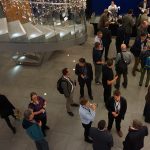Thermal infrared multispectral remote sensing of lithology and mineralogy based on spectral properties of materials
For many years, much research has been undertaken using spaceborne thermal systems for lithological and mineralogical mapping. Works of Ninomiya and Fu amongst others are well known as benchmarks for a number of the spectral indices that we use today, in particular with their application to ASTER data and more recently also to GaoFen-5 a sensor similar to ASTER in terms of spectral capability.

Their new peer-reviewed article provides a comprehensive review of the systems available for this type of mapping, the types of indices that can be applied in different environments as well as the understandable caution with which they should be applied.
Overview:
The major minerals forming the Earth’s crust exhibit characteristic spectral properties in the thermal infrared (TIR; 7–14 µm) region of the spectrum, although most of them have few features in the visible and near infrared (0.4–2.5 µm) region. As there exists a good atmospheric window in the TIR spectral region, a number of multispectral TIR remote sensors have been developed by various agencies the world over for geological applications.
This paper reviews such type of remote sensing systems, and especially focuses attention on the Advanced Spaceborne Thermal Emission and Reflection Radiometer (ASTER). The spectroscopic basis in analyzing and interpreting the multispectral TIR remote sensing data is discussed. It includes a review of the historical studies, methodology of spectral measurements and comparison of spectra measured in laboratory/field with that derived from the remotely sensed data.
Subsequently, the studies of lithology and mineralogy using TIR multispectral remote sensing data by various workers are reviewed. The various spectral indices proposed by the authors for extracting information on the mineralogy or chemistry of the target geological materials are summarized.
Click to Read the Full Text
References
Geological Survey of Japan, AIST, Central 7, 1-1-1, Tsukuba, Ibaraki 3058567, Japan
Institute of Remote Sensing and Digital Earth, CAS, No. 9 Dengzhuang South Rd., Haidian District, Beijing 100094, China
Reproduced with the permission of the Authors.





